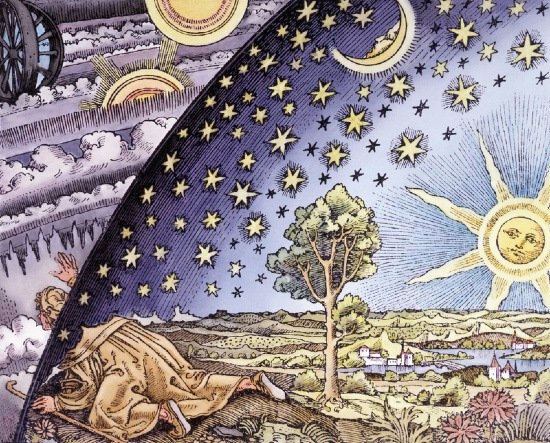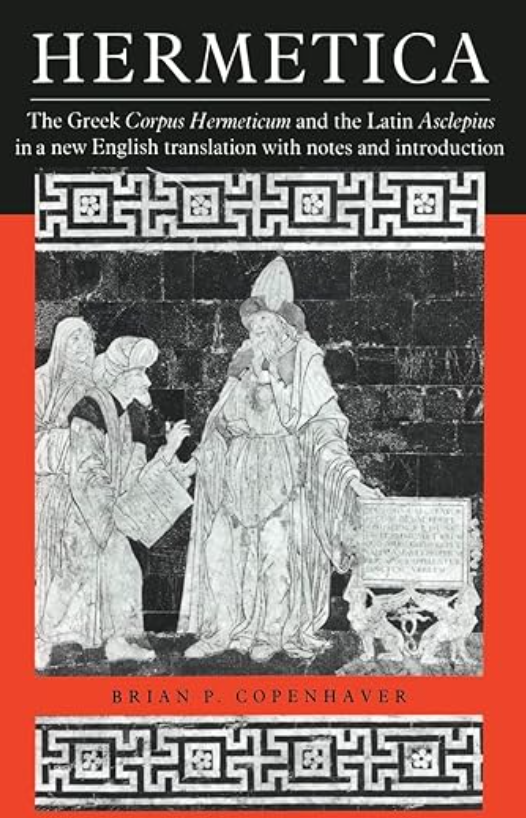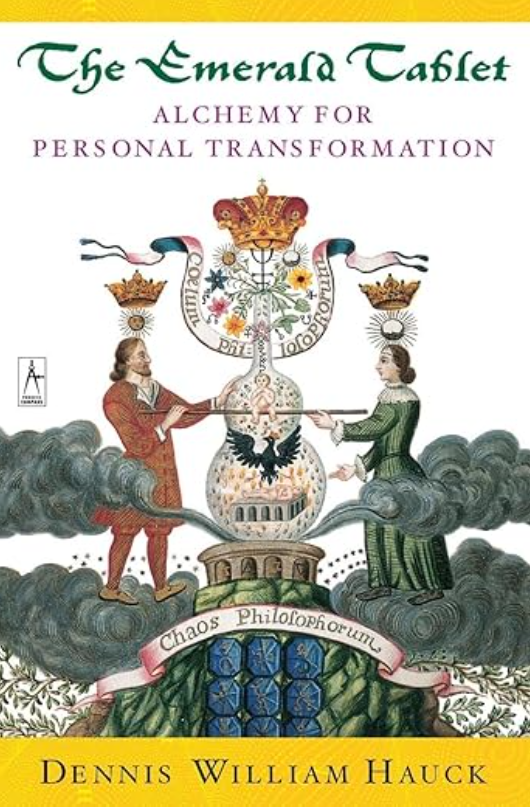
Hermeticism FAQs
Hermeticism vs Tibetan Buddhism?
Discover The Similarities and Differences Between These Two Paths
Hermeticism and Tibetan Buddhism are two deeply esoteric systems that offer maps for inner transformation. Though their cosmologies and languages differ, both traditions reveal a universe that is multilayered, symbolic, and responsive to conscious practice.
From the use of ritual and mantra to the understanding of subtle energy and the goal of enlightenment or union with the Divine, these two traditions—separated by continents—speak to the soul in strikingly similar ways.
-
Originates in ancient Egypt and Hellenistic Greece
Expressed through texts like the Corpus Hermeticum and The Kybalion
Teaches that the universe is mental, symbolic, and governed by universal laws
-
An esoteric form of Mahāyāna and Vajrayāna Buddhism developed in Tibet
Preserved through oral transmission, texts like the Bardo Thödol (Tibetan Book of the Dead), and tantric practices
Uses ritual, visualization, mantra, and meditation to purify karma and attain enlightenment
Historical Context of Hermeticism and Tibetan Buddhism
Hermeticism and Tibetan Buddhism arose in different eras, cultures, and cosmologies—yet they share surprising parallels that speak to the universality of esoteric wisdom. One emerged in the ancient Greco-Egyptian world; the other evolved on the Tibetan Plateau, shaped by Indian tantric Buddhism. Despite their geographic and doctrinal distance, both developed highly sophisticated systems for understanding the structure of reality, the layers of the self, and the process of spiritual awakening.
Hermeticism: Sacred Science of the Western Mysteries
Hermeticism took shape in the first few centuries CE in Alexandria, a major center of cultural and intellectual exchange where Egyptian temple traditions, Greek philosophy, Jewish mysticism, and early Christian ideas intermingled. The Corpus Hermeticum—a series of mystical dialogues attributed to Hermes Trismegistus—blended Platonic metaphysics, Egyptian cosmology, and initiatory teachings into a spiritual philosophy that saw the human being as a microcosm of the cosmos.
Hermetic teachings fell out of view with the rise of Christianity but were revived during the Renaissance, influencing key figures like Marsilio Ficino and Giordano Bruno. In the modern era, Hermeticism inspired occult orders such as the Hermetic Order of the Golden Dawn and shaped the Western Mystery Tradition as we know it.
Tibetan Buddhism: Tantric Technology of Liberation
Tibetan Buddhism emerged in the 7th–8th centuries CE when Indian Mahāyāna and Vajrayāna (tantric) teachings were brought to Tibet. These teachings included highly detailed maps of the subtle body, energy channels (nāḍīs), and mind states, forming the basis for a vast esoteric system focused on rapid spiritual awakening.
What distinguishes Tibetan Buddhism is its integration of indigenous Bön shamanism, Indian tantra, and Buddhist philosophy, resulting in a complete system of death preparation, energy transmutation, and direct realization of emptiness.
For centuries, Tibetan Buddhist knowledge remained isolated, safeguarded in monasteries and by wandering yogis. It wasn't until the Tibetan diaspora of the mid-20th century that these teachings became accessible to the West.
Two Esoteric Traditions, One Human Question
What’s striking is that both traditions aim at the same thing: to awaken the individual from illusion, transform the subtle body and mind, and return to a state of divine or enlightened awareness.
They do so with:
Structured initiatory paths
Sacred symbols and visualization
Sound, breath, and energy mastery
Cosmological models that mirror the soul’s ascent
These aren't random parallels—they reflect what the Hermeticists called the "perennial philosophy" and what comparative scholars recognize as the universal architecture of mystical experience.
Bridging Eastern and Western Esotericism
In the modern era, more seekers than ever are turning to both Hermeticism and Tibetan Buddhism as complementary paths of awakening. Far from being purely philosophical, both traditions offer practical tools, initiatory systems, and structured teachings designed to transform consciousness, elevate awareness, and liberate the soul.
Influential esoteric teachers such as Helena Blavatsky, Alice Bailey, and Manly P. Hall helped bring these traditions into dialogue, weaving together Eastern and Western mysticism into an evolving, integrated spiritual path.
From the ceremonial magick and alchemical rituals of the Western Hermetic tradition to the deity yoga, mantra, and subtle energy practices of Tibetan Buddhism, both paths engage the body, mind, and spirit through direct, transformative experience. Today, lineages once separated by geography, language, and culture are available side by side. East and West, ancient and modern, inner and outer are no longer distant poles—they’re threads in a larger spiritual tapestry.
Studying Hermeticism and Tibetan Buddhism together isn’t about blending paths indiscriminately. It’s about approaching each with reverence and discernment, honoring their unique lineages while opening to the shared wisdom that flows through both. This kind of cross-traditional exploration is more than intellectually enriching—it’s a living act of integration, a reflection of the Hermetic axiom: As within, so without. As above, so below.
When engaged with sincerity, this journey becomes a path toward greater wholeness—one that recognizes that truth is not confined to a single tradition, but revealed in many sacred forms.
A Comparision of Hermeticism vs. Tibetan Buddhism
Nature of Reality
Hermeticism: All is Mind. The universe is a reflection of divine intelligence—structured by the principles of Correspondence, Vibration, and Polarity. Reality is knowable through symbolic understanding and conscious alignment.
Tibetan Buddhism: Reality is empty of inherent existence (śūnyatā) but full of luminous awareness (rigpa). Appearances are projections of mind; liberation comes from seeing through illusion and embodying the enlightened view.
Cosmology and Subtle Realms
Hermeticism: Describes multiple planes (physical, astral, mental, causal), divine archetypes, planetary correspondences, and symbolic geometry (e.g., Tree of Life).
Tibetan Buddhism: Teaches the Six Realms of Existence, the Bardo states, and subtle energy channels (nāḍīs) and winds (prāṇa) as part of the tantric body.
Spiritual Tools and Practices
Hermeticism: Ritual magic, sacred geometry, mental alchemy, meditation, and initiatory teachings used to refine the self and align with divine law.
Tibetan Buddhism: Tantra, deity visualization, mantras, mudras, mandalas, and the guidance of a lama to purify the mindstream and recognize innate Buddhahood.
View of the Self
Hermeticism: The self is divine in origin, layered, and capable of transformation. The path is about conscious evolution and remembrance of one's true nature.
Tibetan Buddhism: The ego-self is a mistaken identity. The true nature is no-self (anattā)—clear, open awareness. Enlightenment is recognizing this emptiness without clinging.
Initiation and Lineage
Hermeticism: Involves mystery schools, graded initiations, and private transmission of esoteric teachings.
Tibetan Buddhism: Heavily lineage-based; empowerment (wang), oral transmission (lung), and secret instruction (tri) are essential for tantric practices.
The Key Similarities of Hermeticism vs. Tibetan Buddhism
Transmutation of Energy
Both systems are alchemical at their core:
Hermeticism transmutes lower energies into higher states through mental discipline and symbolic ritual.
Tibetan Buddhism transmutes desire, anger, and ignorance into wisdom and compassion through deity yoga and inner fire practices.
Multi-Level Reality and Esoteric Maps
Hermeticism maps reality in symbolic planes and correspondences.
Tibetan Buddhism does so through subtle anatomy, realms, and mandalic structures.
Both emphasize that what is visible is only part of the story—the real work happens in the unseen.
Transformation Through Inner Practice
Meditation, mantra, visualization, and ritual are central to both.
Both traditions stress direct experience over belief—awakening must be realized internally.
🕯️ Death as a Spiritual Portal
Hermeticism prepares the soul for the afterlife through alignment and energetic purification.
Tibetan Buddhism offers precise instructions for navigating the Bardo, recognizing luminous awareness at death.
Both view death not as an end, but a transition—a final opportunity for liberation.
Why Study Both?
You don’t need to "choose" between Hermeticism and Tibetan Buddhism. In fact, these traditions can complement one another beautifully. Hermeticism offers symbolic insight into the laws of creation. Tibetan Buddhism gives you a precise, tested toolkit for transforming the mind.
Both help you strip away illusion, refine awareness, and awaken to your true nature.
Study both not to collect systems, but to deepen your own direct experience of consciousness, energy, and the path home.
🔍 Explore More Esoteric Comparisons
Curious how Hermetic thought compares to other spiritual traditions? Continue your journey of discovery:
What Is Hermeticism? (Beginner’s Guide) →
Hermeticism vs Christian Mysticism →
Hermeticism vs Law of Attraction →
Note: Spiritual exploration of various thought systems isn’t to decide which one is “better” or more correct—it’s to expand your lens. Each tradition offers a unique language for describing the journey of the soul, the structure of the universe, and the human potential for awakening.
In true Hermetic fashion, learning from multiple wisdom traditions is a path to greater discernment, wholeness, and integration. Let these teachings be mirrors, not rules—tools that help you clarify your own experience of the divine.
Recommended Texts for Students of Hermeticism
-

Corpus Hermeticum
A collection of dialogues between Hermes and his disciples, covering topics such as the nature of the divine, the creation of the universe, and the path to spiritual enlightenment. It explores the relationship between the divine mind and human consciousness, offering a path toward spiritual awakening.
-

Emerald Tablet
A cryptic and poetic text that contains some of the most famous Hermetic aphorisms, including "As above, so below." This phrase encapsulates the Hermetic belief in the interconnectedness of all things and the idea that the microcosm (human experience) reflects the macrocosm (the universe).
-

The Kybalion
This text presents the foundational teachings of Hermetic philosophy. It outlines the 7 universal principles that govern the nature of reality, providing insight into the workings of the universe with practical guidance for spiritual growth, self-mastery, and understanding the deeper truths of existence.
Recommended Texts: Christian Mysticism
-
The Cloud of Unknowing (Anonymous)
A classic text from the 14th century on contemplative prayer and the path of unknowing God through love.
-
New Seeds of Contemplation (Thomas Merton)
One of my favorites, by this 20th-century Trappist monk who bridged Christian mysticism with Eastern thought.
-
Revelations of Divine Love (Julian of Norwich)
A profoundly hopeful mystic who received visions of Christ’s compassion and “oneing” with the soul.
-
The Interior Castle (St. Teresa of Ávila)
Deeply symbolic, practical, and intimate descriptions of the soul’s journey inward toward God.
Study with an Authentic Hermetic Lineage…
The tools, healings and secrets of the ancient mystery school traditions were once veiled, known only to the privileged elite—royalty, artists, scholars.
In these remarkable times, the doors are now open to the public, with wisdom unveiled for all who seek to take the journey on the path of self-mastery that has illuminated the minds of history's brightest souls…
Leonardo DiVinci, Nicola Tesla, David Bowie… These are just some of the remarkable people who studied in the mystery school tradition.
Are you ready?

